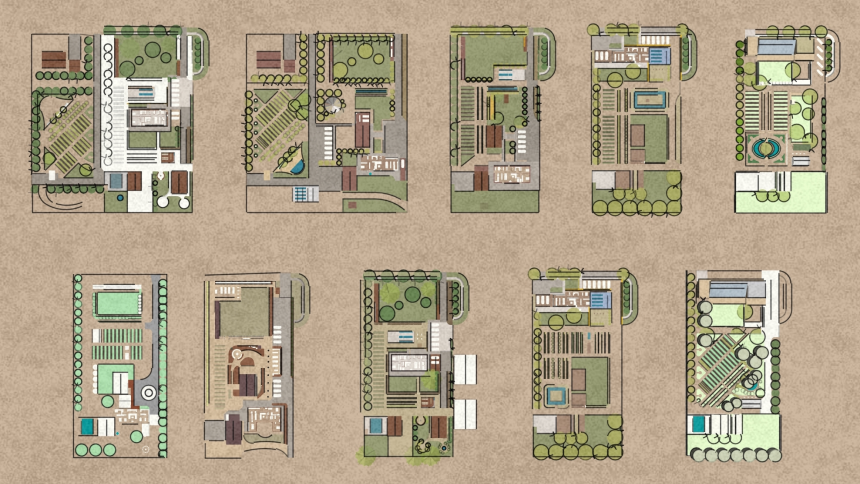Tyler Brumfield | 2020 Art Instructor Show
Tyler Brumfield is a featured artist in The Art Instructor Show, a virtual gallery featuring artwork created by Pacific’s talented art & design faculty.
It‘s no secret that Modernism and the Industrial Revolution are deeply intertwined. Many artists in the early 20th Century considered industry an exciting harbinger of progress. Improvements in the production of goods, growth of urban areas and ease of transportation promised to catalyze a societal shift for the benefit of all people.
Few considered the cost...
Plastic waste is strewn everywhere, in every nook and cranny across the globe— even in the very deepest depths of the ocean.
—Tyler Brumfield
The Industrial Revolution and the enduring adherence to its principles of production and consumption have resulted in unfathomable amounts of waste and wreaked havoc upon the health of our planet. Ecosystems are dead or dying and entire populations of creatures are being wiped out. Plastic waste is strewn everywhere, in every nook and cranny across the globe— even in the very deepest depths of the ocean.
These works visualize my efforts to keep commonly thrown-away plastic items— that become pollutants and micro-plastics— out of landfills and out of the ocean. All plastic components were saved or removed from the waste stream by me, my family, and folks from my community.
By appropriating the aesthetic of Modern sculpture (singular purity, abstraction, and truth to materials) these works create a direct dialogue with history. The style references the era of which Modern sculpture was a product,and sets up a visual system with the purpose of critiquing Modernism’s disregard for planet earth in its pursuit of progress. The wooden structures are near-abstractions of creatures that reside on the Oregon coast and are affected in some way by the pollution of industry. Wood, as a material, was chosen because it is an ideal metaphor for nature. It is nature: it’s organic, beautiful and alive.
The plastic components serve to represent pollution. In the literal sense, plastic bottle caps, for example, are among the top five most common items of pollution found washed up on beaches. In the metaphorical sense, plastic is a synthetic material, and the selected plastic items (bottle caps, drinking straws, and take-out containers) are— in more than one sense— indicators of mass consumption.
Through good craftsmanship, keen visual organization and a dynamic handling of color, shape and texture, the works offer a powerful visual experience for the viewer: an experience that I hope ignites curiosity, spurs a desire for more information, and causes the viewer to examine their complicity in the problem of plastic waste.
—Artist Statement, Tyler Brumfield
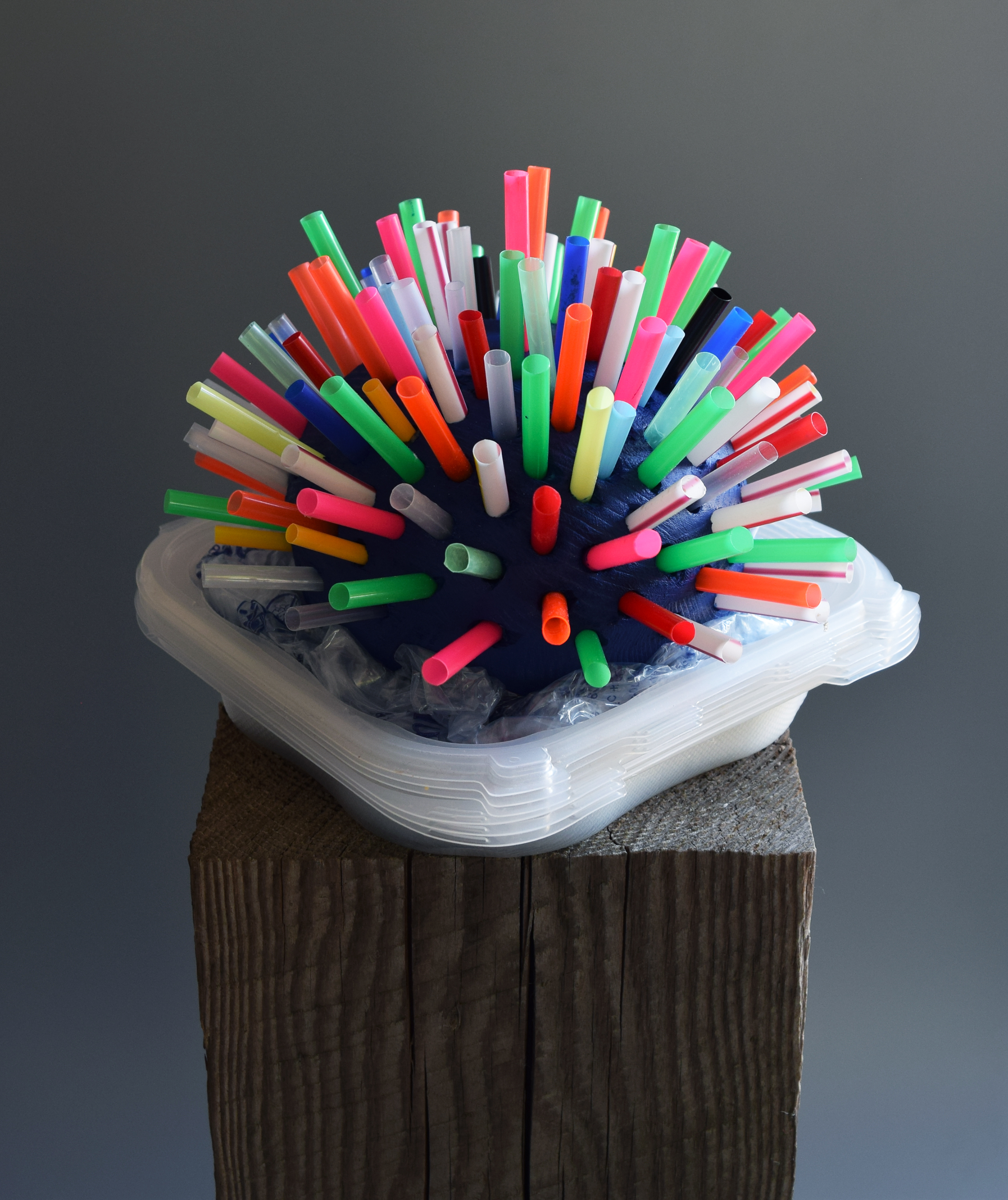
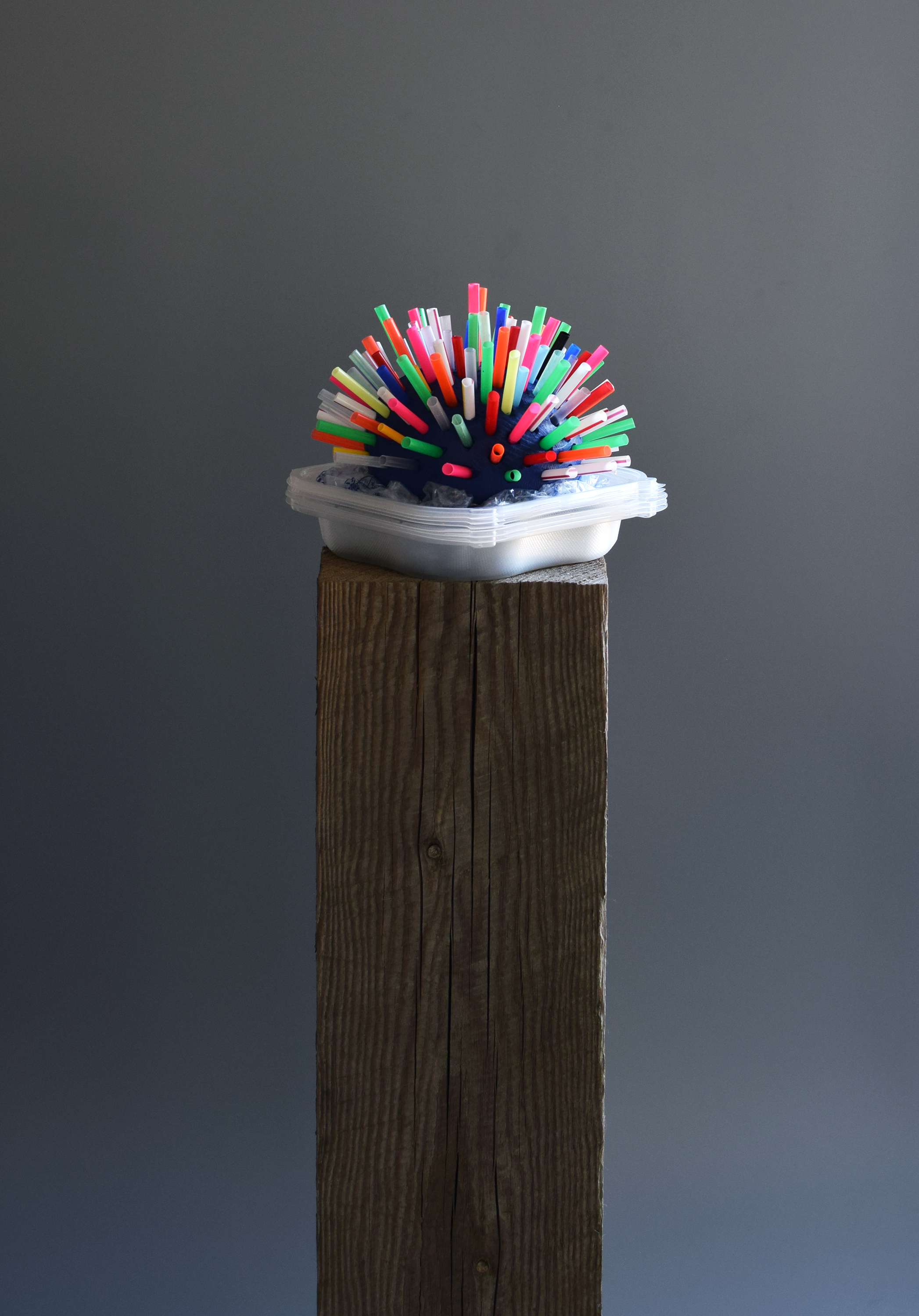
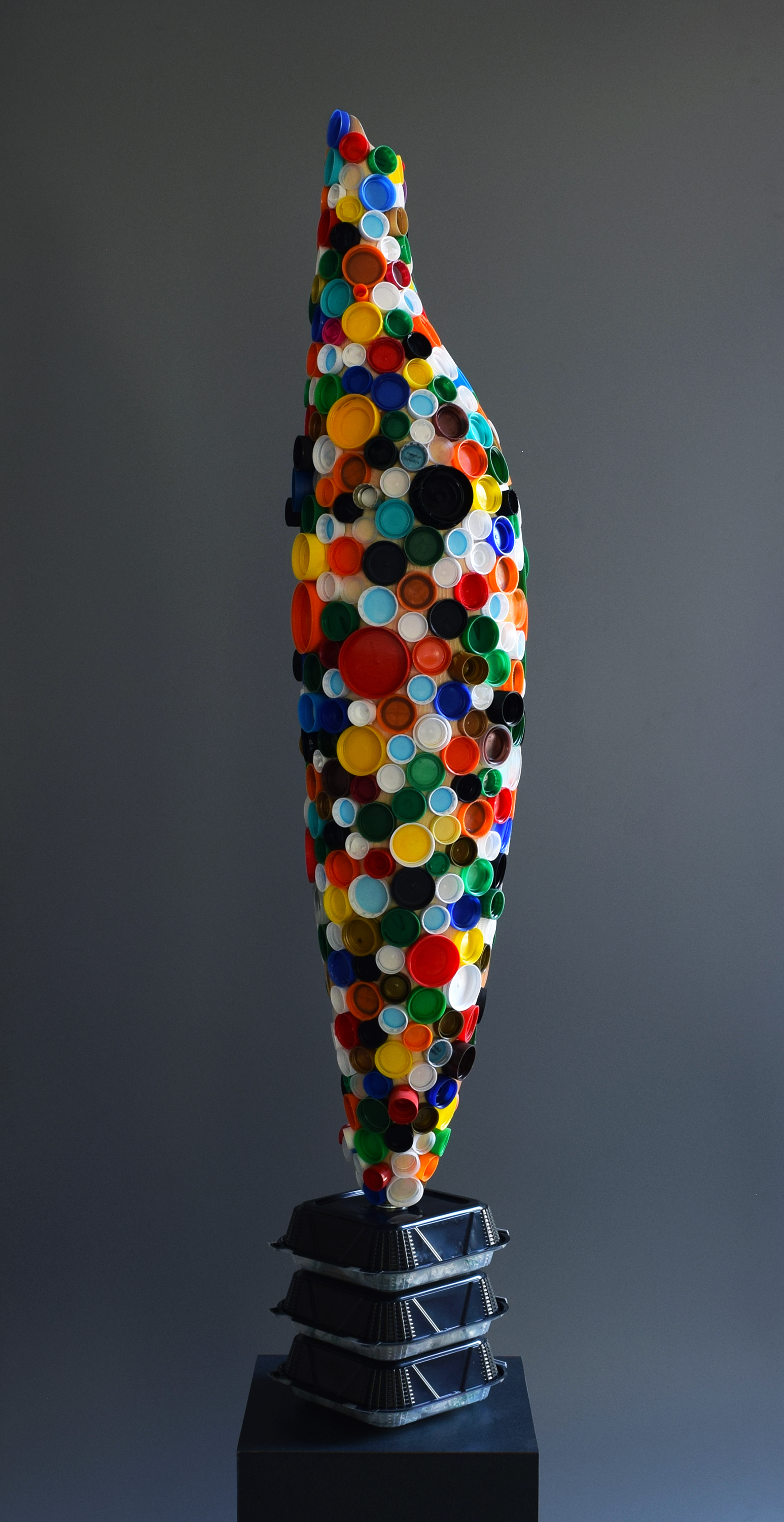
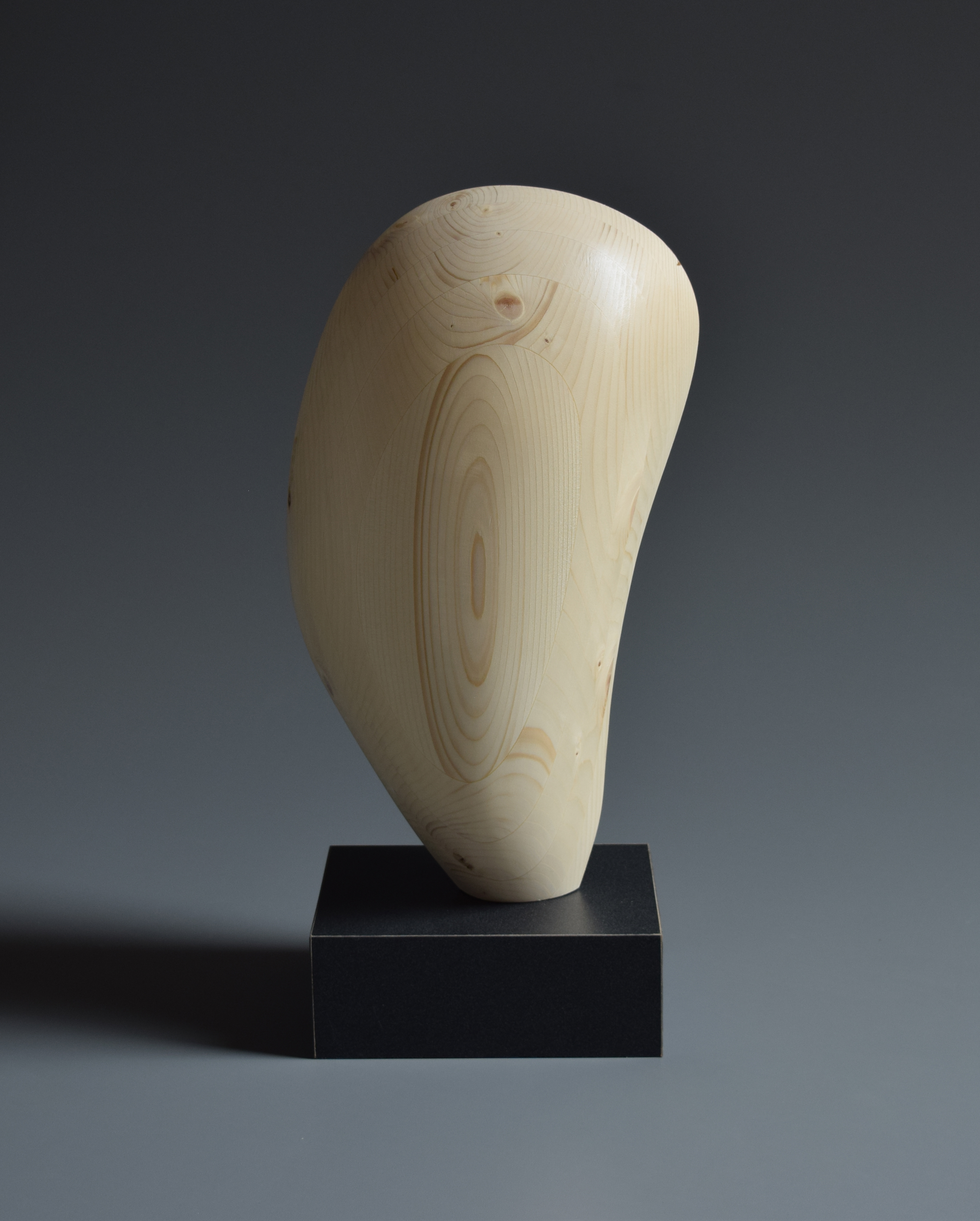
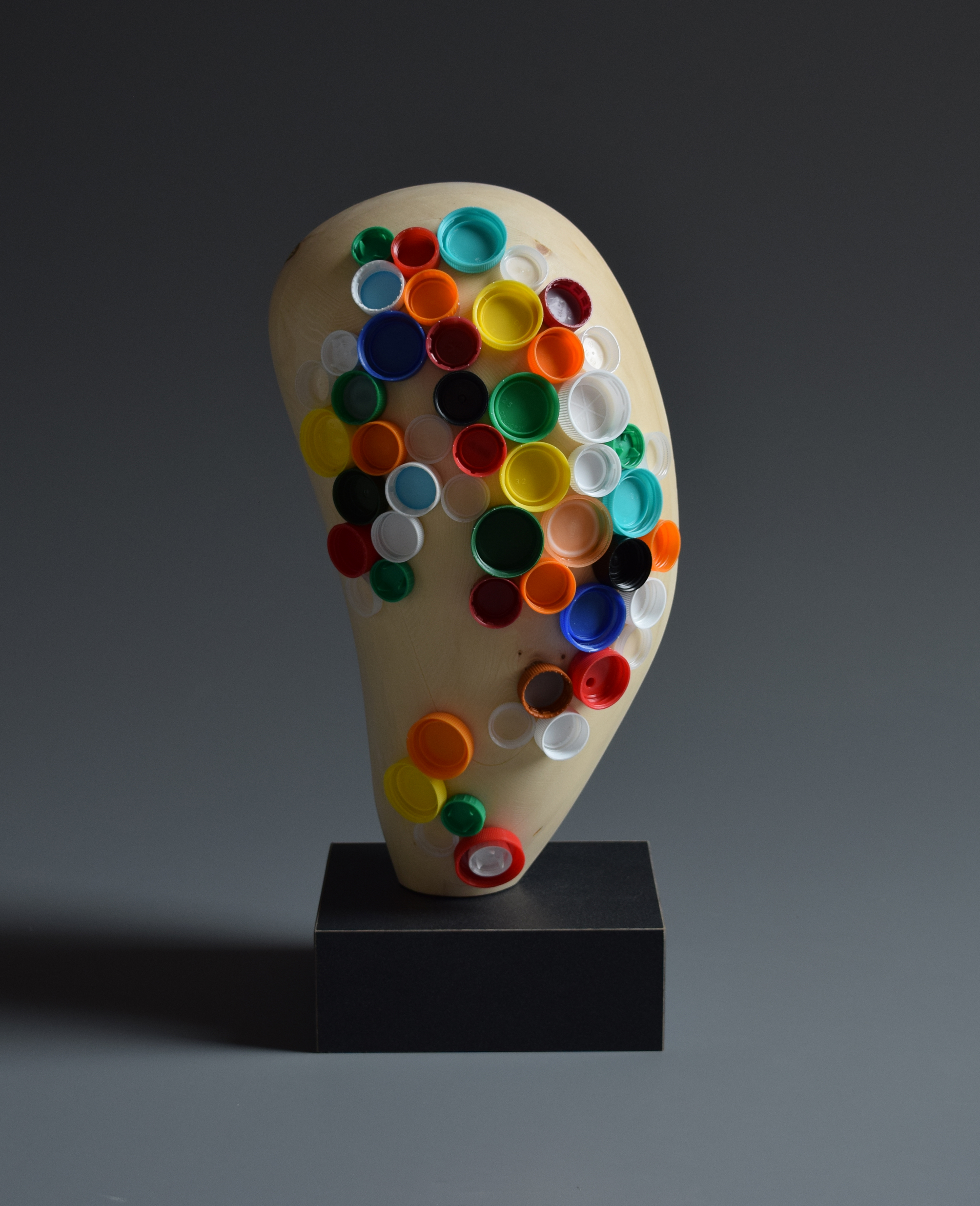 Tyler Brumfield
float-right
500
Tyler Brumfield
float-right
500



